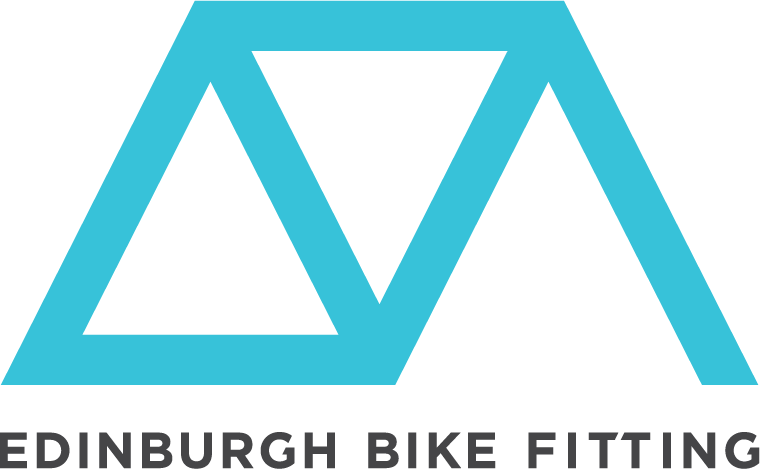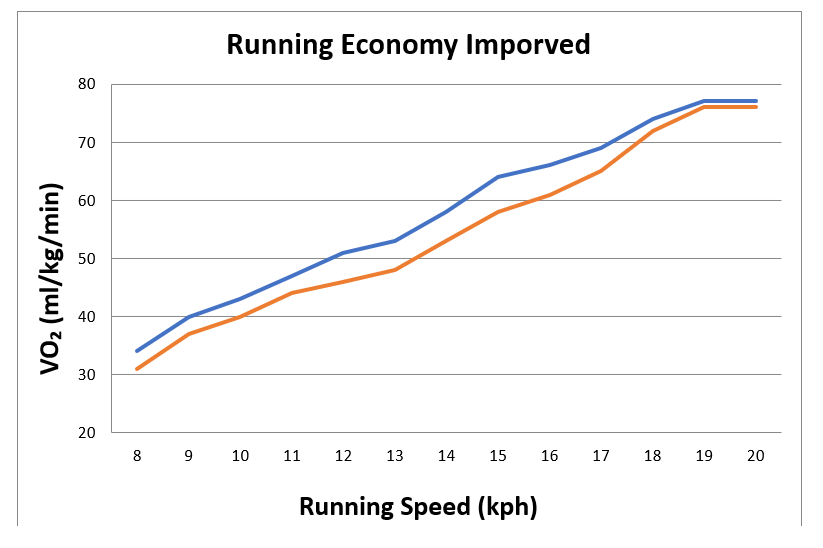Training Slower Might Make You Faster
Exercise Economy, Training Zones and The Power of Zone 2
A couple weeks ago we looked at how strength/resistance training can affect exercise economy from a mechanical standpoint which I briefly touched upon. I’ve had a few questions in regards to other ways of influencing exercise economy without going to the gym. So what we are going to look into today is how we can influence exercise economy from a metabolic standpoint.
From the questions I was asked, I’m not sure I really covered what is exercise economy exactly? Looking at the graph below of an athlete (me!) quite some time apart I should add and about 7kgs difference during a VO2 max running ramp test. You can see that for the same running speed I’m using less oxygen at any given speed, which essentially means I’m able to run faster for the same effort. I am also using different fuel sources at different points on the graph and each speed.
The Red line is an improved running economy, running the same speed for less oxygen cost.
As endurance athletes we want to be able to utilize fat as a fuel source for long as possible as we have a lot more energy stored as fat than carbohydrate (CHO). In order for our muscles to be used concentrically (contracted, push the pedals etc.) we must first synthesise adenosine triphosphate (ATP). There are 2 ways this is produced : ATP can be synthesised as a break down of fat and CHO, aerobically and anaerobically. Fat can be utilized to generate 55-70%(ish) of ATP depending on your fitness and anything above that is generated by CHO. Fat takes longer to be broken down into a usable energy source and so with high intensity efforts CHO takes over as its broken down quicker. The higher our heart rates become the more we rely on carbohydrates (CHO) as a fuel and CHO comes in a limited supply which can’t be replaced as fast as they are used. In general we store around 2 hours of energy (glycogen) in our muscle as a standard but when training and racing we probably will use up these resources and we can't replace them all. An easy way to think of this is you burn 500-700 kcal per hour racing and you can only replace about 200 kcal per hour, maybe a little bit more with nutrition training. Hence why being able to use fat as a fuel source for longer at a higher relative intensity is obviously better for the duration of a race and we develop this by training at lower intensities. This is a topic our nutritionist, Robyn, might cover in another post. However, this brings the next question.
Intervals, long slow distance and threshold… where should you really spend your time? This may not make sense to everyone, but I’m certain that everyone wants to “build a base”, right? One thing that doesn’t lie and that’s science. Sometimes things change the more we understand. If you want to build a base then you should be spending your time in Zone 2 or around 60%-70% of your Max Heart Rate. This will help develop your ability to utilize fat as a fuel source which long term means we can race at a higher speed for less energy cost and not dipping into your glycogen reserves as quick and this means you faster by training slower.
My personal preference is to use HRR (Heart Rate Reserve) which you can calculate by finding your max heart rate (roughly 220-age, if you haven’t done a max test before) - your resting heart (heart rate when you wake up in the morning) and this will give you your heart rate reserve. Of course this is a general guide and sometimes your max heart rate will be higher.
Example: Rory
191 (220-29) - 44 (resting HR) = 147 x 0.6 (60%) = 88.2
44 + 88.2 (60% of HRR) = 132 is 60%
44 + 102 (70% of HRR) = 146 is 70%
So, my Zone 2 is 132-146 bpm. From this we can then work out all the other zones:
Zone 1 - 117-132
Zone 2 - 132-146
Zone 3 - 146-162
Zone 4 - 162-176
Zone 5 - 176-191
I know there is overlap on numbers but it keeps things simple for the percentages. The other option is just to work on a percentage of your max heart rate.
191 x 0.5 = 95.5
x 0.6 = 114 etc.
Zone 1 - 95-114
Zone 2 - 115-134
Zone 3 - 135-152
Zone 4 - 153-172
Zone 5 - 173-191
As I said before, personally I prefer the first method of heart rate reserve but neither is right or wrong, they are pretty similar realistically and your coach using one or other doesn’t make too much of a difference. The difference is the fitter you get the lower your resting heart rate becomes and the greater your HRR is, although the double edged sword is theoretically the older you get the lower your maximum heart rate. So it might be worth thinking about which method to use depending on how true the 220-age method works for you. I know even though I’m a retired pro athlete I can still get my heart rate about 191 which is 220-age. If you are using Training Peaks the software will do this for you, but you should still understand how it works and why it asks for max and resting heart rate.
I know a lot of things were touched upon but that’s the reality of training. It’s easy to get fit but it takes someone with a decent understanding on how to make you fitter long term and create a good plan to follow. You also need to remember riding for 1, 2 or even 3 hours on the turbo at Zone 2 might make you resent your bike, which is why it's often broken up by intervals you just need to remember when it says easy to go easy!
Train smart!
Rory
Just to mention you are all formally invited to our Assos Launch event with drinks on Friday the 12th of April, make sure to RSVP.

